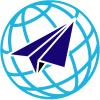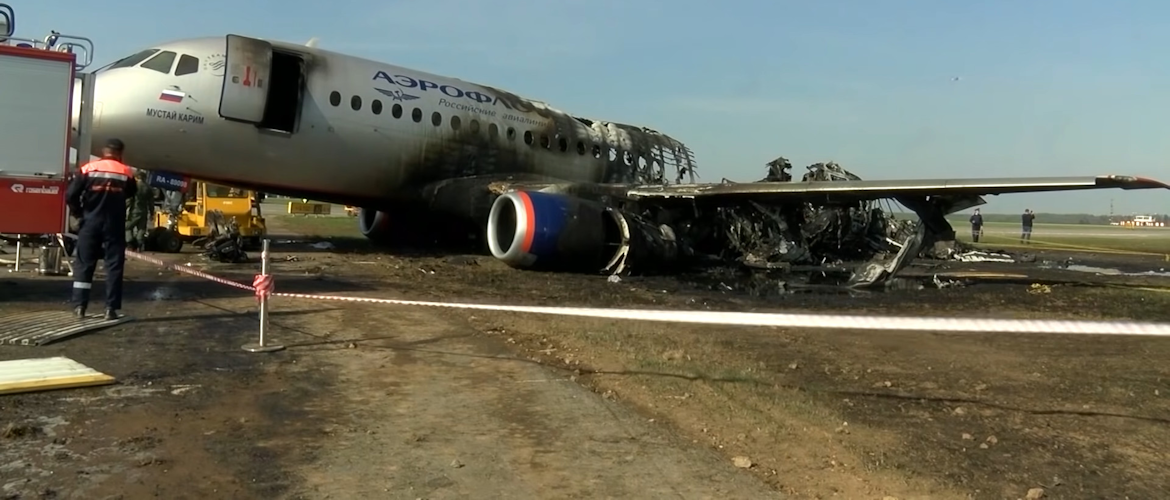The Investigational Committee of the Russian Federation has launched criminal investigation against Denis Yevdokimov, the commander of the ill-fated SU-1492 Aeroflot flight, who ended up having a SuperJet 100 incident killing 41.
Where do accidents start?
While it will be long time before the Interstate Aviation Committee completes the investigation, I would gladly discuss an important issue right now – the causes underlying both recent and possible aviation accidents and incidents in Russia.
Внимательное исследование системного кризиса в области качества подготовки российских пилотов приводит к неутешительным выводам: ответственность за катастрофы и за гибель людей должны нести чиновники Федерального агентства воздушного транспорта – Росавиации.
The so-called agency in question has unreasonably monopolized commercial aviation pilot training, which has resulted in the irreversible degradation of the training quality. The functionaries only care about gains, and those are ill-gotten gains. So, how does it work?
Is it all about a good start?
Any well-trained pilot has to spend academic hours on his/her solo flight – the hours when the pilot is on his/her own in the cockpit. A solo flight is an experience that all pilots remember in detail for the rest of their days, and a thing that Russian pilots miss out on badly, as many state-run educational institutions have cut it from their curriculums. Meanwhile, some state-run flight school students have the cheek to upload on the Internet their videos of so-called “solo flights”, with a fellow student sated on their right, and filming the flight by using a smartphone or a camcorder. Sometimes, there can be even an instructor accompanying a “solo flight” student. The instructor, without missing a beat, may say that he is not meddling with the flight – consequently, the flight is a solo flight, which is the greatest stupidity!
Essentially, those videos reveal that Russian state-run educational institutions, including the well-vaunted institution graduated by Maxim Yuryevich Kostylev, the inglorious chief of the Flight Operation Agency of the Rosaviatsiya, violate approved training schedules. No wonder the quality of training they provide can hardly be described as acceptable.
Double standards
Mr Kostylev, however, is very selective in his approach to handling violations by making far-retched allegations on federal TV channels against educational institutions that breech no guidelines, a brave gentleman as he is. A blabbering speech of this gentleman is provided in a footage below, by way of illustration (English subtitles are available):
On the other hand, all the flight schools affiliated with Rosaviatsiya seem to have no problems whatsoever. While private flight school graduates keep having their certificates taken away under pretexts, their counterparts from state-run schools, who have documented training violations, will hardly ever forfeit theirs.
Can automatics always prevent incidents?
What is wrong with the initial training system in Russia? Pilots who have never done solo flights are at the controls, that’s what is wrong with it. Those moderately trained pilots have no rivals, for Rosaviatsiys run by Alexander Neradko has taken care about it. To add to the wretched training, domestic flight schools mostly rely on “coaching” students by means of automatics in which Kostylev and Neradko seem to have invested all their hopes, assuming that in case of emergency the plane will somehow keep a poorly trained pilot from an accident, as if my magic.
Дело в том, что уровень автоматизации в современной гражданской авиации действительно высок. Но во всём мире пилотов учат быстро ориентироваться в критической ситуации, когда техника подвела. Ну вот например в случае, когда надёжнейший бортовой компьютер откажет, и самолётом придётся управлять вручную.
Drawing parallels with obtaining a driver’s license, it is like being trained to drive a car by means of automatics, while stating in the documents that you are being taught to operate a manual transmission vehicle, and then being issuing a semi-trailer truck license. It is obvious that a poorly trained semi-trailer driver is a danger to public. In reality, it is hard to imagine that the government would make a stupid thing like that.
The excerpt from the Intermediate Report by the Interstate Aviation Committee illustrates a typical accident that occurred in one of the flight schools controlled by Rosaviatsiya:
Thank you for reading to the end, my friends!
This project exists with your support! I hope to continue sharing with you all the most interesting from the world of civil aviation.
However, more than one hundred Russian pilots including me were out of work because of the policy of the Russian Federal Air Transport Agency. All our funds, time, and money had been wasted on years of litigation.
I would be so grateful if you support me and my project!

